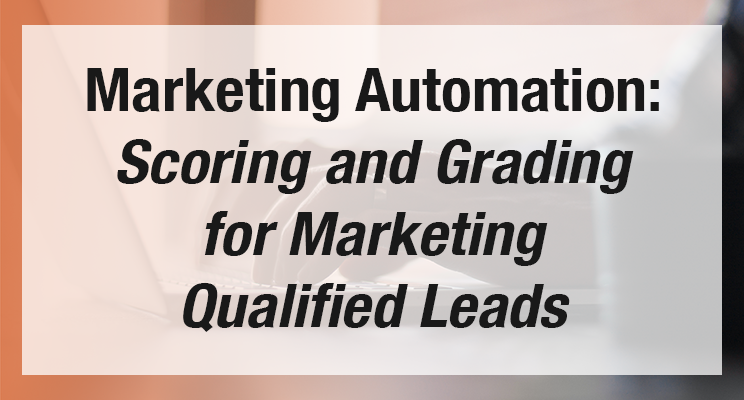As marketers, we need better ways of qualifying and quantifying the kinds of interactions our prospects have with our content and marketing channels over time so that we can better predict when a prospect is ready to be identified as a Marketing Qualified Lead (MQL). What is needed are ways to both score and grade these interactions over time through a weighted metric system.
Prospects who ‘like’ many of our social media posts and download our free PDF resources may be fans of our brand, but their actions are not indicative of any intention to purchase our solution. Conversely, prospects who sign up for trial software, register for and attend our webinars, and those who want more educational content to inform their researching process need to be identified as more likely candidates to nurture in Marketing until they are MQLs for Sales.
Score: points assigned based on each interaction, click, engagement, and share of social media as a quantified activity.
Grade: a value assigned based on the importance/efficacy of the action taken by the user.
Here’s a simplified, practical example.
User Joanna likes 3 of our social media posts in a week. This earns her profile 6 points (2 points each).
The same User Joanna also registers for a webinar we’re hosting which was promoted through a social media post. This action earns her 25 points.
User Marli only liked one of our posts in the past week, earning her 2 points.
User Marli also downloaded one of our new ‘How To’ PDF resources, which she clicked through from a social media post, and earned her 10 points.
User Marli was also interested 2 of our free on-demand videos about two new features of our software, which earned her another 20 points (10 points each).
The idea here is that positive actions are weighted and a cumulative score adds up for User Joanna and User Marli over time. User Joanna earned a total of 31 points for the week while User Marli earned a total of 32 points in the above example.
However, the kinds of actions taken are different between User Joanna and User Marli, and that is reflected in their Grade.
Grading weights the type of activity while Scoring calculates the quantity and type of activity. — Anthony Coppedge
User Joanna’s ‘likes’ of our social media isn’t a good indicator of real interest in using our software, so the score is low (2 points) and the Grade is low (‘D’). However, registering for a webinar is a good indicator (according to our historical records) of interest in using our software, so it has a higher score for the action (25 points) and a high grade for this type of action (‘B’).
Grading weights the type of activity while Scoring calculates the quantity and type of activity. So while the scores for these two users are very close (User Joanna has 31; User Marli has 32), the quality of the interaction for User Joanna was higher due to the ‘B’ score for registering for a webinar versus User Marli only going for the freebie stuff that shows interest but a less likely intent to purchase.
The idea here is that we need to have both a qualitative and quantitative way of understanding, over time, the actions (or inactions, which can add negative values for inactivity over time) of our users and weight the kind of interactions they have with us. This helps us, again over time, build a better definition of a Marketing Qualified Lead so that when they reach a certain pre-determined set of thresholds, they are automatically sent to Sales as pre-qualified with intent to likely buy.
Each marketing automation software tool handles this differently, but the principle is extremely valuable in going beyond basic Personas into highly personalized understanding of how users self-qualify themselves for our products/services over time. After all, not all activity by a prospect or user is equal in the eyes of Marketing.

